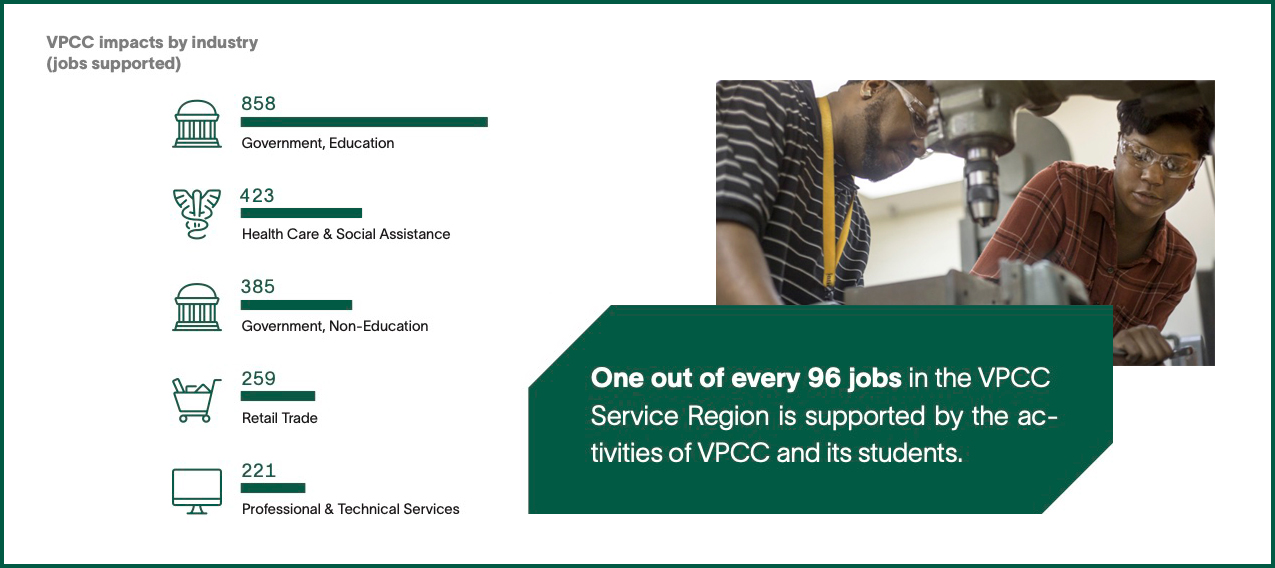VPCC adds economic value to the VPCC Service Region as an employer of regional residents and a large-scale buyer of goods and services. In FY 2021-22, the college employed 529 full-time and part-time faculty and staff, 72% of whom lived in the VPCC Service Region. Total payroll at VPCC was $20.5 million, much of which was spent in the region for groceries, mortgage and rent payments, dining out, and other household expenses. In addition, the college spent $38.8 million on day-to-day expenses related to facilities, supplies, and professional services.
VPCC’s day-to-day operations spending added $29.8 million in income to the region during the analysis year. This figure represents the college’s payroll, the multiplier effects generated by the in-region spending of the college and its employees, and a downward adjustment to account for funding that the college received from regional sources. The $29.8 million in added income is equivalent to supporting 613 jobs in the region.




